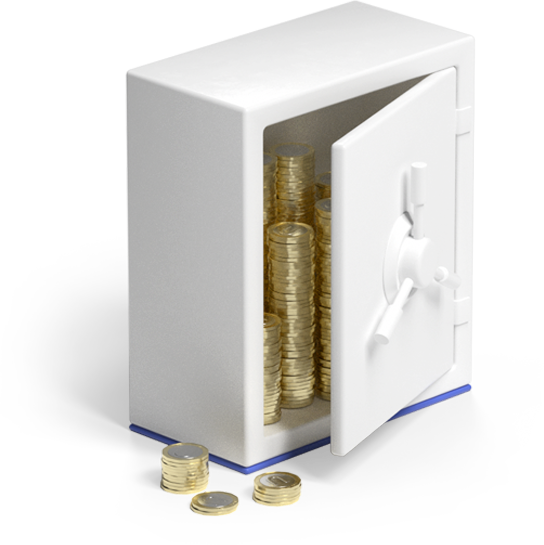Everything You Need To Know About HMO Investments
If you have an interest in property development and property investment, then you will have heard about HMOs and how they represent a potentially lucrative income, compared to the traditional buy-to-let market.
By Jon Howe4/28/21

Everything You Need To Know About HMO Investments
If you have an interest in property development and property investment, then you will have heard about HMOs and how they represent a potentially lucrative income, compared to the traditional buy-to-let market.
However, HMOs are a very different beast to buy-to-let properties and require very careful and specific consideration. Here we are going to study what is a HMO property and look at the pros and cons of HMO investment, with the ultimate objective of establishing what makes a profitable HMO property investment.
What is a HMO?
HMO stands for a house of multiple occupation, it can also be informally known as a multi-let property or a house share. There are some differing definitions according to specific circumstances, but generally, a HMO is a property where a minimum of three separately-paying tenants share communal facilities such as a kitchen, bathroom and toilet, but are not related, ie. not a family or married.
Different legislation applies to HMOs of differing sizes, which we will look at later, but essentially local authorities have different regulations relating to HMOs, so in some locations you may need to apply for a licence, you may have to implement stricter fire safety measures, and in all cases, the rooms that you rent out have to be specific minimum sizes.
HMOs can be hostels or refuges for homeless people, but are most often rented properties with separate tenancies for individuals. These can be people on low income, such as students, or shared accommodation for young professionals just starting work in a new city or having just left their parental home and not able to get on the property ladder themselves.
Why invest in a HMO?
There are a number of obstacles to making good money from HMOs, but it is becoming an increasingly popular property investment market. So let’s firstly take a look at the positives and why you should make a HMO investment.
Maximise rental income
Essentially you can earn income from renting out three or more separate rooms in a HMO, as opposed to renting out a single property to one tenant. Of course you are effectively only renting out a single bedroom and allowing access to other communal areas, so you can’t charge as much as you would for the tenancy of a whole property.
But if you refurbish and market the HMO properly you can make more money from the combined total of separate tenancies than one single tenancy on the whole property. This also allows you to convert a property and get rid of dining rooms or even a living room and make them into bedrooms, so you can rent more rooms out and create more income.
Less void periods
A HMO enables you to have the luxury of reducing the risk of void periods where you have no tenants renting a property. In the traditional buy-to-let market, void periods are a real problem and a serious drain on financial resources, because an entire property is empty and you have no income.
However, with a HMO, if one room is empty, you are still getting income from the other rooms. This allows you time to get new tenants in and you are not dependent on one single income source.
Better demand
There is currently strong demand for HMO tenancies, as people generally struggle to get on the property ladder and first-time buyers have to fall back on the rental market for a period of time. Students provide a very reliable source of tenants, if you find the right property and location, as each university term brings new people to the same area, looking for the same kind of tenancies.
Tax benefits
HMO investment property also offers some tax benefits, as HMO landlords can claim income tax relief through ‘plant and machinery capital allowances’. So you can claim any capital outlay on refurbishments and fittings as an annual expense of what is effectively a rental business.
The risks of investing in a HMO
On the flipside, you definitely need to go into HMO property investment with your eyes open, and probably on the back of some professional advice. That is not to say that it is a market fraught with danger, but it is a singular market covered by different regulations and individual market behaviours and factors.
Suitable properties
A major hurdle to overcome when looking to enter the HMO investment market is finding a suitable property. In short, there are fewer such properties around because they have to be appropriate for HMO use, ie. they have multiple, separate rooms of a certain size that can or have been converted in to bedrooms.
A property with a garage or a conservatory or a walk-through dining and living room isn’t going to be suitable, without major refurbishment investment. This means that properties that are suitable for HMO tenancies are more expensive than they should be for that type of property, or for that location, because there is high demand for them and low supply.
Legislation
Quite apart from the standard legislation that governs how you operate in the HMO market – and you can receive a fine for having the wrong licence or no licence - there is also legislation that dictates what properties can be suitable for HMOs, in terms of minimum room sizes. This restricts the market for suitable properties further and is another factor in driving up purchase prices. We shall discuss this in full shortly.
Finance
There is generally a stricter lending criteria applied to HMO property investment, so it is harder to get a mortgage and you may also need to find a bigger deposit. This, of course, needn’t be a restrictive factor as you can offset this outlay against the additional income you can expect, but it may delay you getting the property on the market, which can be a financial factor, and it may mean you need to seek alternative finance.
Tenants
Because HMOs are often let to tenants on low income, such as students, this may lead to an increasing likelihood of problem tenants. This can become an issue in terms of chasing and receiving rent payments, complaints from neighbours because of noise, or a general disrespect for the property in terms of damage, cleaning and the management of rubbish.
On the flipside, you yourself will have many landlord responsibilities which you have to adhere to, the most basic one being the provision of a safe, healthy and desirable property to live in. This requires some investment and maintenance costs on your part, and this initial investment really depends on the state of the property and the particular type of tenant you are looking to attract, ie. to what standard do you need to decorate and fit the property out?
You may decide that you can afford to invest a little more in a premium-style property for a young professional or even student market, but accordingly add a premium to the rent. You can only do this on the back of some good local research and the knowledge that demand for that kind of tenancy is around.
Managing the property
You need to decide what kind of landlord you want to be. Do you want to manage the property yourself as a hands-on landlord? This brings a lot more work than a one-tenancy buy-to-let property, as you are collecting rent from multiple people and consequently dealing with multiple problems. A bigger house with more rooms also naturally brings more maintenance issues.
You have the option of being a hands-off landlord and paying someone to manage the property for you, but generally speaking, letting agents aren’t keen on taking on HMOs for the same reasons as above, they require much more management, and hence a letting agent will want to charge more for managing a HMO.
Capital growth
When you invest in any type of property you always have to think long term, and particularly with property development, you need an exit plan. With HMO property investment this becomes more difficult because of the smaller and more specific market you are operating in.
You are only likely to sell a HMO to another person looking to take on the property on the same basis, unless you are fortunate enough to find a buyer who is happy to invest and convert it back to a residential house, or a buy-to-let or single occupancy property.
This means that such properties may not accumulate in value in accordance with how the market is going generally. If you have made good money in terms of income, it may not bother you that you are breaking even on the purchase and sale of the property, or even making a small loss, but this can only really be decided by your individual circumstances at the time.
For this reason, HMOs are perhaps a difficult market for first-time investors, and are better suited to experienced investors who own a HMO within a wider property portfolio, and hence can carry a break-even scenario on a property or a manageable loss of equity.
HMO legislation and regulations
The legislation and additional regulations surrounding HMOs is a major consideration, when assessing the market and whether it is suitable to you.
Recent legislative changes in 2016 and 2018
A Government crackdown on buy-to-let properties, second homes and HMOs in 2016 saw a 3% tax on stamp duty introduced, this led to further legislative changes valid from October 2018. There has also been a phasing out of tax relief on mortgage interest up to 2021.
Mandatory licensing
Mandatory licensing was introduced from October 2018 and this broadened the scope of what was classed as a ‘large HMO’ and hence required an applicable licence to be obtained in order for a property to be let as a HMO.
Your property is defined as a large HMO if it is rented to five or more people who form more than one household, some or all of the tenants share a toilet, bathroom or kitchen facilities, and at least one tenant pays rent.
A large HMO is also generally defined as such if it is a three-or-more storey building. The scope of what can be classed as a HMO was also extended to include flats above shops and a small block of flats, whether connected to a commercial property or not.
How to apply for a HMO licence
You need to apply to your local authority in order to get a HMO licence. The website www.gov.uk will direct you to the right local authority for your property and you can follow the links to apply for the licence.
The process of applying for a licence should basically involve you assessing the criteria applicable to your local authority. A licence is valid for five years, and you need to apply for a renewal of the licence before the existing one has expired. There are also conditions applied to the continuation and the renewal of the licence.
Room sizes
There are now specific measurements dictating minimum room sizes within a HMO, and hence you can be fined for contravening these, or not holding the right licence for the rooms you do have. The 2018 legislation now dictates that for occupants over the age of ten, single bedrooms sleeping one person need to be a minimum of 6.51 square metres in size.
For a double bedroom sleeping two, this needs to be at least 10.22 metres in size. This naturally restricts what kind of property is suitable to be a HMO. This legislation standardised these minimum sizes across all local authorities in England and Wales and ensured that these directives are now closely monitored by the local authorities.
Article 4 directive
An article 4 directive is subject to local authority criteria and as such you need to carry out research to see how this applies to you. However, if an article 4 directive applies, it dictates that you need planning permission consent in order to change the use of a property to make it a HMO.
Of course, if the property is already operating as such, then this is not an issue, but if it isn’t this can be a lengthy and potentially costly process, and will delay you getting the property on the rental market. Additionally, there is no guarantee that you will be successful in your application.
How to establish a profitable HMO investment
Consider regulations
Having some kind of knowledge of planning laws would be beneficial when looking to invest in a HMO property, but you should certainly be well aware of the legislation relating to your local authority and the specific property you are looking to invest in. This is the very first step in assessing whether a property is suitable for a HMO tenancy, and the legislation applicable might mean you write this property off straight away, or you may be able to proceed on the basis you planned to.
Research the local market
Before going too far into the process you need to research the local market and any comparable HMOs that may already exist in the area. What is the average rental yield for the area? Is it enough to make the project viable for you?
This research will also enable you to assess the standards of accommodation that are being provided for your market type, this allows you to make a rough estimate of refurbishment investment and the quality of fittings and decoration required. In total, this should allow you to calculate your own rental yield and pitch your property in the same market. Does it provide suitable competition for what is already there?
Choose the right market and location
Like any property investment, the location of a property is key to it being a successful investment. If you are looking to use the HMO for student tenancies, is it close to university campuses? Is it the right kind of property? People on low income generally want to be close to transport links and local amenities, so does that apply?
You also need to assess the situation with planning permission and what work will be required to get the property on the rental market. Major refurbishments and an article 4 directive application can delay this, so it is viable to proceed?
What kind of property?
You need to assess whether you want a large property or a small property. There are of course grey areas in between here, but essentially, a large HMO will bring more income but more hassle, and a smaller HMO will bring less income but will be easier to manage, it may also require less initial investment in refurbishment.
The main factor is that you need to maximise the rooms in the house, so won’t need dining rooms or utility rooms, but you do need to consider whether you have enough bathrooms for all the people in the house, in a practical sense. This may affect the desirability of the property.
In terms of profitability, you also need to consider whether a property is suitable for conversion structurally, an older property or one that has already been converted (and not necessarily into a HMO) may carry added risks in terms of wall structure, or electrical wiring or plumbing etc. You need a surveyor to assess all this and also contractors to give you accurate quotes on the work required.
Management strategy for your HMO
Finally, your management strategy is a big factor in what makes a HMO investment profitable. a HMO property can be difficult to manage, but that may only be on an initial basis whilst you make it marketable and find your feet as an experienced landlord.
Those issues should subside over time, and certainly, if you can manage the property yourself, you will be saving an awful lot of costs and hence will make a better profit.
For the more experienced property investor, perhaps one that has a wider portfolio of properties, employing a letting agent may be more viable in terms of the costs you can carry, and how you can manage your time between properties.
In conclusion
As with any property investment, you need to carry out extensive research when considering a HMO property investment. This should cover the legislation you are restricted by, the local property market, the specific property you intend to purchase and the finance options available to you. HMO property investment can present a number of unique challenges, but these are not insurmountable, and with careful planning, advice and management, a HMO property can offer you dependable and regular income and therefore represents a solid investment option.
Take a look at our other articles




